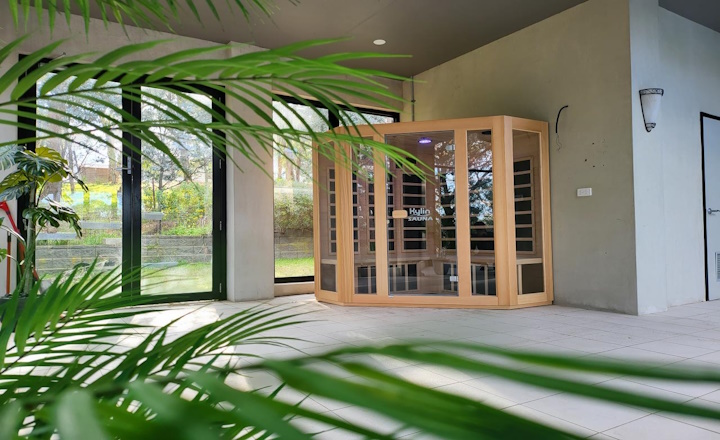
If you are in Perth or planning to take an infrared sauna regularly, you may well wonder how often you should do that. Today Infrared saunas in Perth are quite popular because they can penetrate deeper into the body and have therapeutic properties: the question is how often you should go. Is it appropriate to take a sauna every day?
Basics of Infrared Saunas in Perth
First, let’s learn how these Infrared saunas work. Infrared saunas in Perth differ from traditional saunas that heat the air in that they employ infrared light waves that heat the body. Such an approach enables the client to get deeper penetration into the muscles and tissues hence offering a more profound relaxation and detoxification. As Infrared saunas promote the circulation of blood, act as a detoxifier and relieve muscle tension, people from Perth and other parts of the world are now embracing Infrared saunas more often.
How Many Times a Week Should You Use the Infrared Saunas in Perth?
A wide majority of health practitioners suggest that people take an infrared sauna 2 to 3 sessions per week. This frequency lets you stimulate your body and reach the maximum positive effect on your health but does not overload your organism.
1. Health Detoxification: They suggested that heat coming from an infrared sauna also causes sweating, hence detoxifying the product, which can expel heavy metals and dangerous chemicals. Sauna should be used 2 to 3 times a week to make sure that detoxification is ongoing but does not put too much stress on your system.
2. Muscle Relaxation and Stress Relief: People who have very tight schedules, or those who work under very stressful conditions should be able to make it a habit to have infrared sauna therapy 2 to 3 times a week as it will assist in bounce back the energy in muscles. This allows you to have a consistent frequency of relaxation to deal with daily difficulties.
3. Improved Sleep Quality: For sleep quality, you have to understand that if you have to use the infrared sauna, then the recommended frequency is twice to thrice a week. The calming nature of a sauna will also assist with inducing sleep and the quality of the sleep you get, meaning more energy for the next day.
Is it ok for Infrared saunas in Perth to Daily Use?
Though Infrared saunas in Perth are very healthy in many ways, frequent daily use can put too much stress on your body. A participant is required to spend time allowing the body to regain its normal physiological state after exposure to the sauna. Here are some considerations:
1. Listen to Your Body: If at any one time you find that you are feeling tired or uncomfortable after the use of the sauna, it is advisable to cut down on the sessions. It is, therefore, advisable to take water while taking the sauna so as not to suffer from exhaustion after the session.
2. Gradually Increase Frequency: The chances should be raised gradually, starting from two sessions a week and going up to three sessions. If any negative side effect is observed, alter the usage plan of the two antibiotics.
3. Consult Your Doctor: If you have certain conditions or if there are concerns as to how the use of a sauna is going to affect your health then the best that you can do is to ask the health professional in you. Professionals belonging to the disciplines can protect, educate and inform clients about the best way to get the most out of an infrared sauna safely.
Our Advanced Sauna Equipment in Perth
The kind of equipment used in the infrared sauna has to be very good if one is to get the best results. In Perth, our sauna rooms are designed with cutting-edge technology to meet various user needs: In Perth, our sauna rooms are designed with cutting-edge technology to meet various user needs:
1. Adjustable Temperature and Infrared Power: In our Infrared saunas in Perth, you can manage temperature and infrared power with simplicity so you can have the heating experience of your choice. This flexibility ensures that you get the most comfort out of the seat and in the process address your health needs as desired.
2. Premium Wood and High-Quality Components: The asbestos-free saunas in our Perth showrooms are made from quality wood and first-grade accessories which always guarantee durability and efficiency. Getting the best materials makes the equipment last for a longer period also making the comfort and efficiency of the machine to be the best.
3. State-of-the-Art Infrared Technology: We also have the latest equipment that employs the infrared system that allows penetration of heat deeper into muscles making them relax after some rigorous exercise, reduces stress and enhances health. No matter if you have tired muscles and you want to soothe them or want to activate your blood flow, we offer simply the best infrared saunas.
If you’re in Perth and interested in high-quality infrared sauna equipment, our Infrared saunas in Perth are your ideal choice. Our equipment features adjustable temperature and infrared power, premium materials, and exceptional performance. Contact Kylin today to learn more. We look forward to providing you with the best sauna experience, allowing you to enjoy health and comfort in your daily life!




